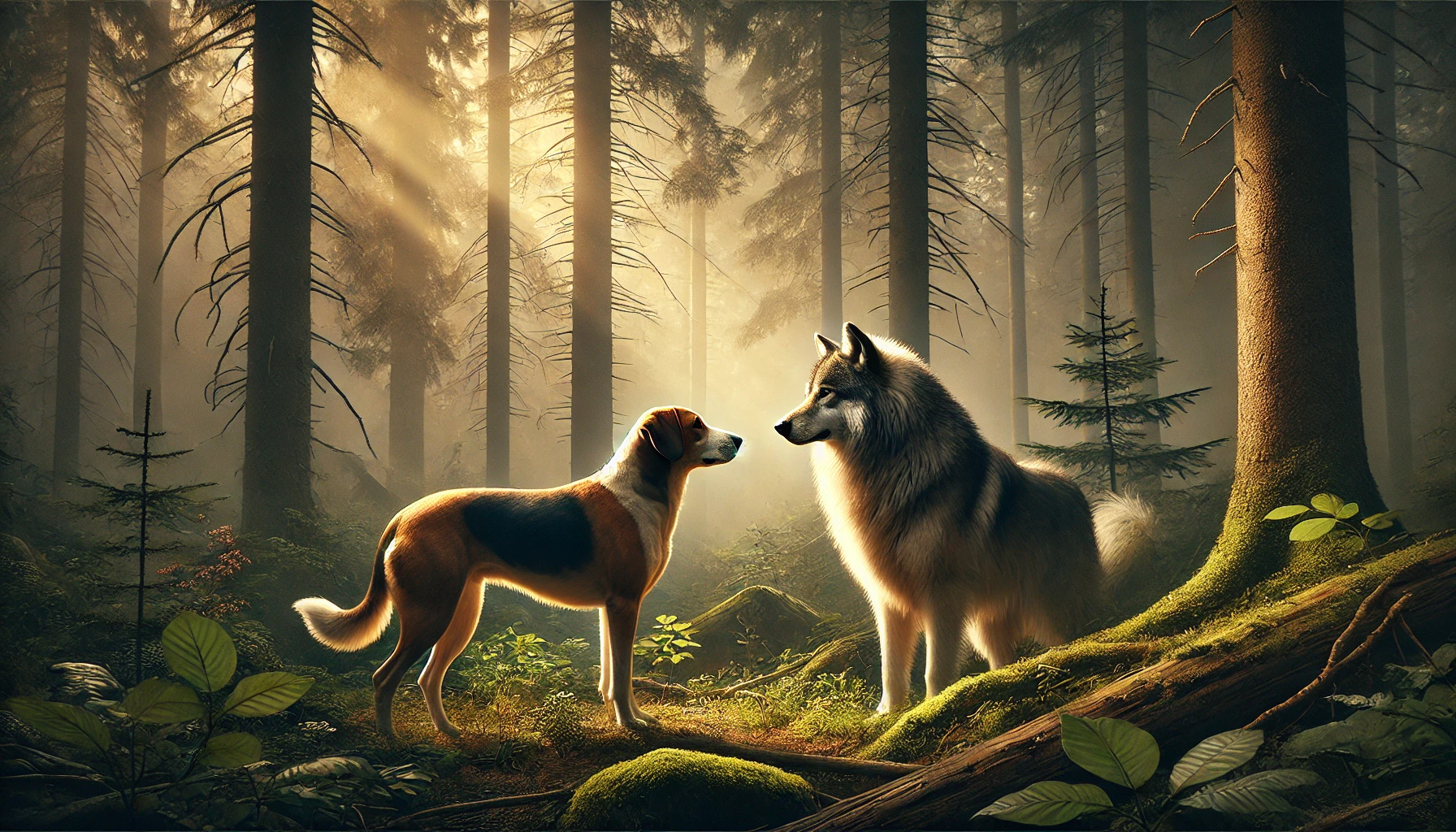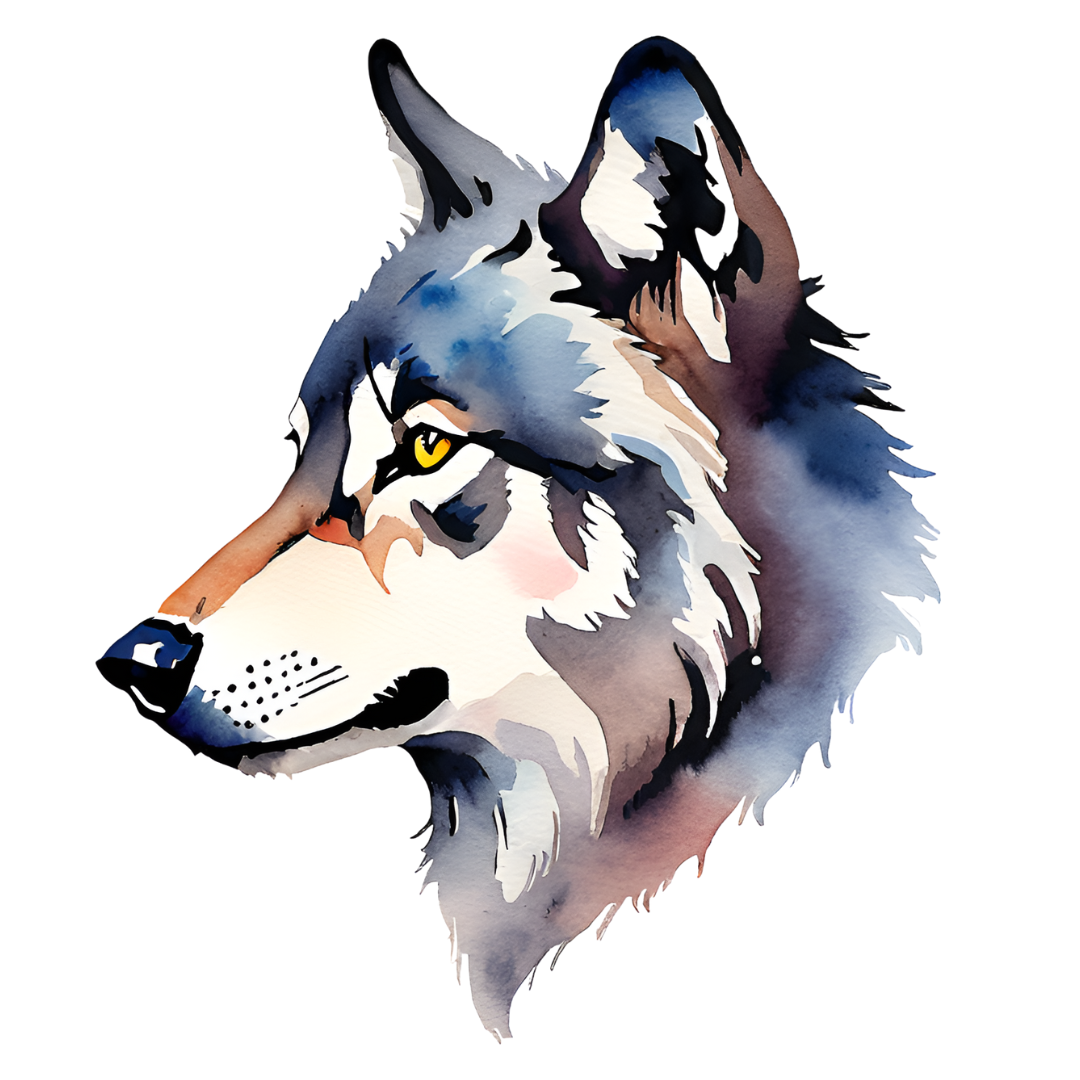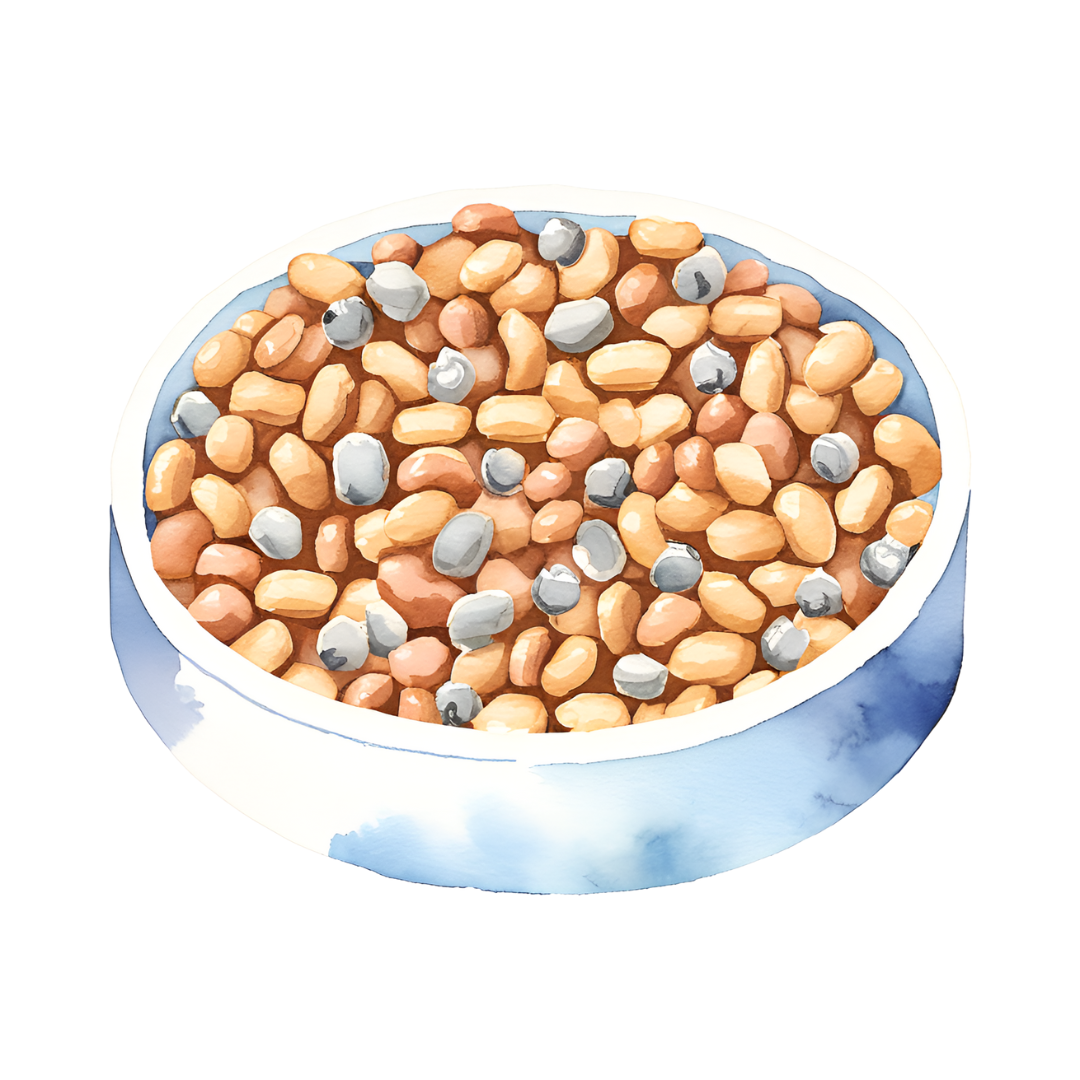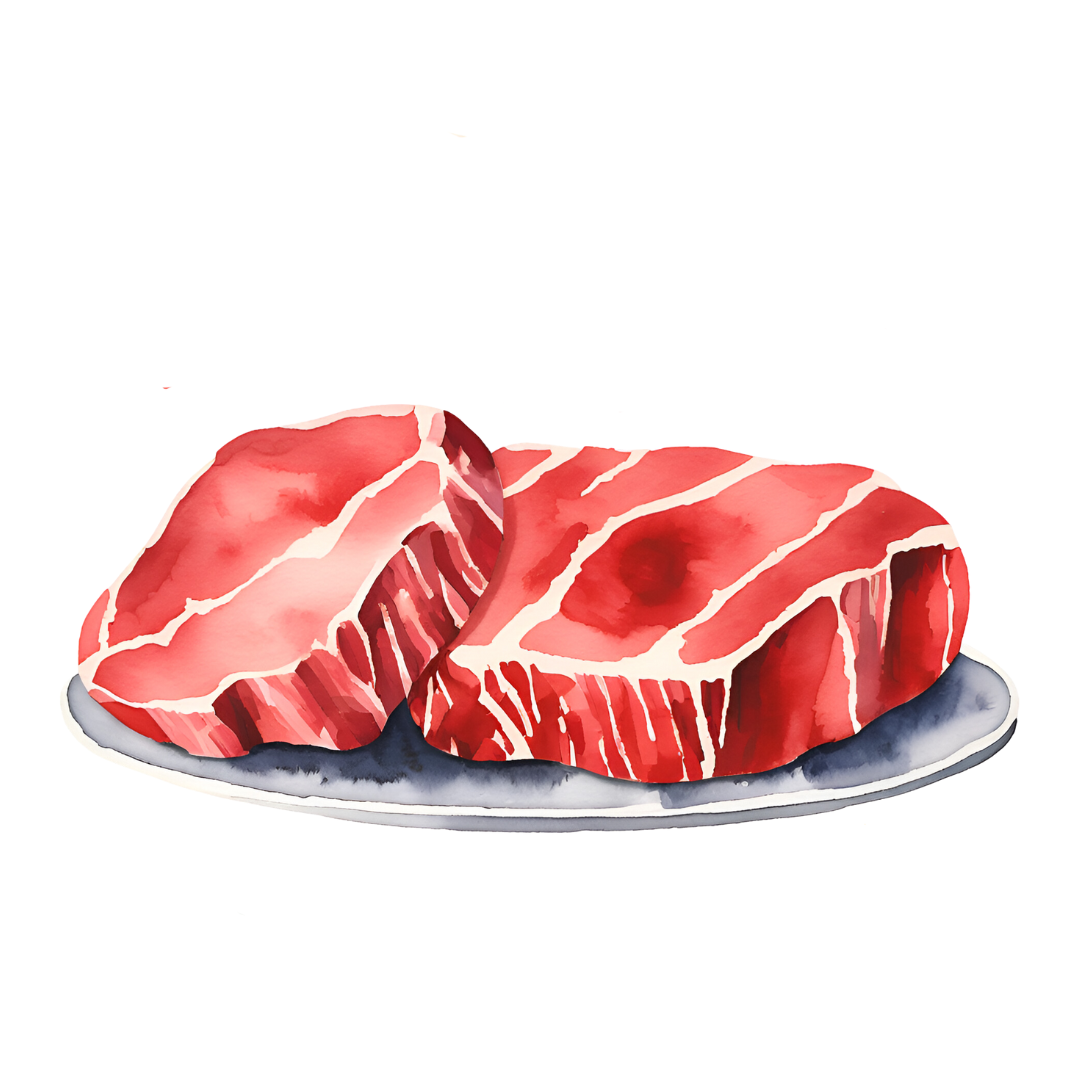Are dogs omnivores? Dog food versus meat in the light of research

Authors publishing in the British Journal of Nutrition have provided us with extremely interesting facts and hypotheses regarding the optimal diet for man's best friend. In the article Dietary nutrient profiles of wild wolves: insights for optimal dog nutrition? they questioned the classification of dogs as omnivores, sparking a discussion on how this misconception affects the health and well-being of our pets fed commercial dog foods.
Canis lupus familiaris. From wolf to dog

Domestic dogs (Canis lupus familiaris) are not only man's best but also probably the oldest friend. Moreover, it was the bond with our species that contributed to the existence of dogs as such—when our ancestors lived as nomadic hunter-gatherers, camps attracted gray wolves (Canis lupus), the ancestors of today's dogs, who scavenged on the remains of hunted animals or feasted on injured prey that had escaped human hunters.
This relationship took a new level when, between 13,000 and 17,000 years ago, humans began to lead a sedentary lifestyle and develop agriculture in the Fertile Crescent of the Middle East. For wolves scavenging near human settlements, this meant the emergence of a new food niche. Plant and animal waste from human settlements became an exceptionally favorable food source for wolves already accustomed to humans—it did not require the energy expenditure of tracking, chasing, and fighting. Wolves that were more open to contact with humans had a better chance of surviving and reproducing in human settlements. As a result of repeated domestications and crossbreeding with wild relatives, domesticated dogs gradually emerged as we know them today.
Over time, breeding activities became increasingly specific, resulting in a vast morphological and behavioral diversity of dogs, from guardians and hunting assistants to salon beauties. This is why our four-legged friend can now weigh both 3 kilograms and 100—still remaining a dog.
Although the diversity of breeds is immense, researchers have noted that many of these differences have a simple genetic basis. Moreover, while modern dogs rarely resemble wolves, they can still interbreed with them and produce fertile offspring. The genetic differences observed in dogs are mainly the product of environmental adaptations that affected their ancestors.
Does a dog's breed affect its diet?

The studies cited in the described article showed that three genes (AMY2B, MGAM, and SGLT1) associated with starch digestion and glucose absorption were important during the domestication of dogs. However, not all dog breeds have the same number of copies of the AMY2B gene. For example, saluki, an ancient breed from the Middle East, has as many as twenty-nine copies of this gene. In contrast, breeds such as dingo and Siberian husky have only three to four copies. This may be due to these breeds evolving alongside hunter-gatherer tribes rather than farmers, affecting their ability to digest starch.
Other studies show that dogs have not changed their ability to synthesize certain essential nutrients, such as niacin, taurine, and arginine, through the domestication process. This means that despite breed diversity, many metabolic traits of dogs remain similar to those of their wolf ancestors.
So, does a dog's breed affect its diet? The answer seems to be: to some extent, yes. Breeds that developed close to farming people may better digest starch, while breeds that evolved alongside hunter-gatherers may need a diet even more similar to that of wolves.
On what basis are conclusions drawn, and what do wolves eat?
Conclusions about wolves' diet were based on a review of twenty-six studies covering fifty different analyses of the species Canis lupus—as many as 31,276 analyses of wolf feces and stomachs!
In North America, wolves primarily hunt moose, white-tailed deer, and beavers (Castor canadensis). Their diet also includes medium-sized and small animals, with the most common being the snowshoe hare (Lepus americanus). Wolves in western Canada often consume mustelids, as well as birds, insects, and fish.
Analysis confirmed the fact already mentioned on our animal nutrition blog that wolves in their natural environment mainly prefer ungulates, but they do not disdain smaller animals either. In Europe, their menu consists mainly of wild boar, moose, roe deer, and red deer. Beavers (Castor fiber) also occasionally appear on the menu. In one study conducted in Latvia during the summer, beavers accounted for as much as 12.6% of the diet. Other animals, such as birds, reptiles, insects, and fish, are also part of the diet but play a smaller role in the total biomass consumed.
What is the role of plants in the diet of dogs and wolves?
There are many theories about the proper role of plants in the diet of dogs and wolves, but what do studies say about it? The article's authors acknowledge that many analyses showed the presence of plant material in wolf feces, but its share in the total biomass consumed was not always accurately calculated. Sometimes, for example, grass found in feces or stomachs was not taken into account, even though wolves might have eaten it intentionally: other studies showed the presence of grasses and sedges in 32.6% of fecal samples. Grass often appeared in ordered bundles, in some cases constituting over 50% of the volume of feces, leading researchers to speculate that wolves may consume these plants intentionally to cleanse their intestines.
Other plant materials found in the samples included blueberries, strawberries, raspberries, nuts, and various larger fruits such as apples, pears, and plums. These products contain some energy in the form of carbohydrates but are poor in other nutrients, so their significance in the wolf diet is minimal.
Interestingly, contrary to popular belief, studies did not confirm that wolves partially feed on fermented plant matter from ungulate stomachs. However, the rumen lining and intestinal wall could be consumed.
The most important conclusion is the overall share of plant material in the wolf diet—in studies where this material was considered, plants accounted for only 0.1 to 3% of the wolf diet. This means that wolves should be considered true carnivores, for whom plant matter is a minimal component of their overall diet.
Comparison of the wolf's diet with dog feeding

 Researchers compared the above data with the minimum nutritional requirements of growing and adult dogs according to the National Research Council. It turned out that the nutritional properties of dog foods can differ significantly from the natural diet of wolves: the wolf's diet contains much more protein, calcium, zinc, iron, and magnesium than the minimum requirements for these nutrients in dogs.
Researchers compared the above data with the minimum nutritional requirements of growing and adult dogs according to the National Research Council. It turned out that the nutritional properties of dog foods can differ significantly from the natural diet of wolves: the wolf's diet contains much more protein, calcium, zinc, iron, and magnesium than the minimum requirements for these nutrients in dogs.
Moreover, the average calcium content in the wolf's diet was lower than in commercial dry dog foods, and the sodium and magnesium content was lower than reported in both dry and wet dog foods.
Dogs, thanks to the adaptive features of their wolf ancestors, have a certain dietary flexibility and resistance to a suboptimal diet. But is the fact that a dog's body can survive on improper nutrition really a good reason to feed dogs incorrectly?
Carbohydrates in Dog Food: A Challenge for Dog Health
Commercial dog foods contain significantly more carbohydrates than the diet of wolves, as investigated by comparing the average content of nitrogen-free extract (NFE). In dry and wet commercial foods, it was 25.8 and 20.0 g/MJ of metabolic energy (ME), respectively, while in the diet of wolves: 0.7 g/MJ of metabolic energy.
 Even when considering the conditionally high intake of NFE by wolves, the carbohydrate content in commercial dog foods remains surprisingly high. Moreover, the NFE in dog food primarily comes from starch from cereal grains, while in the diet of wolves, it comes from glycogen found in the liver of large prey such as deer.
Even when considering the conditionally high intake of NFE by wolves, the carbohydrate content in commercial dog foods remains surprisingly high. Moreover, the NFE in dog food primarily comes from starch from cereal grains, while in the diet of wolves, it comes from glycogen found in the liver of large prey such as deer.
These facts lead to the conclusion that wolves are probably not exposed to the daily glycemic load that domestic dogs consuming commercial foods may experience. Even considering the fact that dogs, compared to wolves, have an increased ability to digest and absorb starch, reflection is necessary on the impact of permanently high glucose intake on the health and longevity of dogs. Such a large carbohydrate content in dog foods may pose a long-term challenge for our pets' bodies.
Fats in Dog Food: What Are They and What Should They Be?
N-3 fatty acids, such as EPA and DHA, play a crucial role in many physiological processes, including reducing inflammation and immune responses, affecting kidney function, cardiovascular health, and neurological development.
Unfortunately, the fats present in commercial dog foods differ significantly from those consumed by wolves in their natural diet, potentially causing deficiencies of the aforementioned desirable fatty acids in dogs.
Commercial dog foods show an average n-6 to n-3 ratio of 8:1, ranging from 5:1 to 17:1. In wild deer and mule deer, it is about 2:1 to 3:1, similar to the 2:1 ratio in the subcutaneous fat of wolves.
This is due to the fact that in muscle lipids of farmed cattle and chickens, this ratio ranges from 6:1 to 19:1. Furthermore, modern fish farming also produces fish with lower n-3 fatty acid content compared to their wild counterparts.
Even if the fats in dog foods are well absorbed, the long-term impact of n-3 fatty acid deficiency on an animal's body may pose a challenge to its health and well-being.
What Important Nutrients Are Missing in Dog Foods?
A proper gut microbiological environment plays a crucial role in host physiology, influencing the immune system and even animal behavior. However, commercial dog foods lack ingredients present in the wolf's diet that impact the gut microbiota.
The whole prey, especially lower quality animal tissues (e.g., raw skin and bones), provide substances with low digestibility or indigestible characteristics—different from plant fibers and indigestible proteins in processed dog food. These indigestible food fractions provide substrates for the microbiota in the small and large intestines. The type of these substrates differs between the wolf's diet and dry and wet dog food, which can significantly impact our pets' health.
Should Dogs Eat Like Omnivores or Carnivores?

The ecology of wolf nutrition and nutrient intake can provide valuable insights into the digestive physiology and metabolism of dogs. The ancestors of our dogs were true carnivores, not omnivores. Wolves coped with variable nutrient intake, requiring adaptive metabolism, which still functions in modern dogs. These traits also allowed wolves to transition from carnivory to relative omnivory during domestication.
The nutritional characteristics of commercial dog foods differ significantly from the natural diet of wolves, which may pose a physiological and metabolic challenge for dogs. Especially in situations where their adaptive capacity is reduced, such as old age or chronic diseases, a diet requiring adaptive metabolism may unnecessarily burden their bodies.
Dogs have adapted to a starch-rich diet thanks to increased enzymatic capacity to digest starch and better glucose uptake. They can also cope with large fluctuations in nutrient intake. But does this mean we should feed them a diet they can "handle" instead of providing them with an optimal diet? While dogs can survive on an omnivorous diet, the optimal diet for them is a carnivorous one.
This article is based on Dietary nutrient profiles of wild wolves: insights for optimal dog nutrition? by Guido Bosch, Esther A. Hagen-Plantinga, and Wouter H. Hendriks, published in the British Journal of Nutrition (2015), 113, S40–S54.
Article text: inessiwinska@gmail.com
Recommended

KB BARF - Deer meat 1kg

KB MIX - Wild pigeon (wood pigeon) 1kg

KB MIX - Wild pheasant 1kg

KB MIX - Wild hare 1kg

KB BARF - Horse 2kg

KB BARF - Horse, minced 1kg

KB BARF - Rabbit kidneys 1kg

KB BARF - Salmon

KB MIX - Duck 1kg


